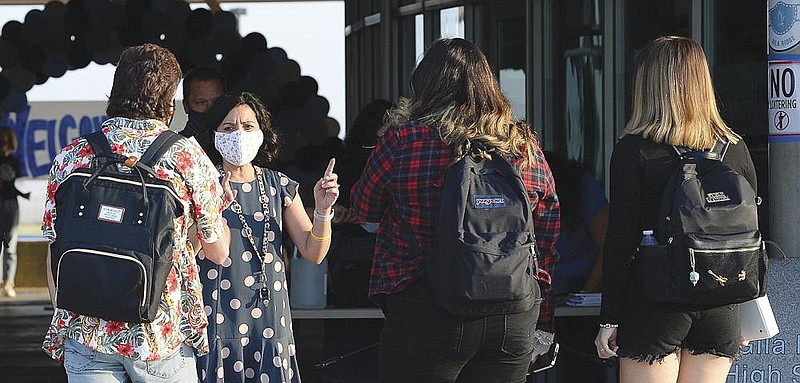As preschools, elementary schools and day care centers welcome returning children across the country this fall, researchers are hoping to learn more about the transmission of the virus among younger children.
But efforts to screen children may be hindered by several factors: age limits at certain testing sites, fear or discomfort from swab testing and the tendency for children to not exhibit signs of infection, making them less likely to qualify for immediate testing.
"I think it's problematic not knowing," Charles Schleien, chair of pediatrics at Cohen Children's Medical Center at Northwell Health in New York, said about limits on testing access for children. "I think parents will have to be incredibly vigilant about any symptoms and keep the kid home and assume the worst."
The children may not have symptoms or be unable to express that they are not feeling well, unwittingly spreading the virus as they continue to go to school or come into contact with adults.
[CORONAVIRUS: Click here for our complete coverage » arkansasonline.com/coronavirus]
Only when the older members of the family -- those more likely to show signs of infection -- get tested do they learn what has happened: It's covid-19, and by then it's everywhere.
A patchwork of age limits at testing sites may make it difficult for parents to find a dependable location for speedily checking on their sick child, pediatric health and testing experts told The Washington Post, especially as the rules of testing have evolved with invention and capacity.
CVS announced Sept. 11 that it would lower its age limit from 16 to 12 at more than 2,000 drive-through testing sites. The pharmacy giant's minimum age is set by clinical experts because of the viability of self-swab tests done by children younger than 12, according to company spokesman Joe Goode.
Walgreens' age limit is 18 at its pharmacy testing sites. The company did not respond to requests for comments from The Washington Post about why it does not test children.
Pediatricians and hospitals can order tests without age limits. Some sites, like the county-run locations in San Diego, recommend a hospital or alternative location for children.
The county doesn't permit testing of those younger than 11 at its testing sites but has a partnership with a hospital to run pediatric testing, according to county spokesperson Sarah Sweeney, who cited a state law regarding consent as to why younger children cannot be tested at sites.
Less than one-quarter of the state-supported testing sites in Florida allow all ages to be tested. Ahead of the first day of reopened schools, Florida announced in August that it would prioritize pediatric testing at sites that have it.
Barriers to testing, according to the American Academy of Pediatrics, limit understanding of how the virus spreads.
"It would be helpful for pediatricians to identify resources to learn how to obtain tests on children of all ages or else refer those patients to centers where they can be tested," said Yvonne "Bonnie" Maldonado, a pediatrics and epidemiology professor at Stanford University School of Medicine and chair of the academy's infectious diseases committee. "This would improve our ability to identify infection in infants and children of all ages."
Public health experts have already cautioned that isolation is one of the most effective ways to prevent spread among children. Yet with children once again gathering in schools and child-care centers after a summer reprieve, clusters have begun emerging -- as well as cases where the virus spread from youngsters to adults.
Ahead of the semester, in August, the CDC made a controversial change to its testing recommendations, saying the screening of asymptomatic people is unnecessary. The CDC also does not recommend universal screening in schools.
Bypassing asymptomatic carriers for testing could allow the virus to fester in communities unchecked, researchers have found.
However, other research has indicated pediatric patients do not shed as much of the virus as infected adults. A small study published in the Pediatrics medical journal in July found that of 74 pediatric patients in China, there was no evidence that the virus was transmitted from children to adults. But schools were closed at the time of the review.
Surveillance testing of children in most schools is neither feasible nor worth the effort, said George Rutherford, a pediatrician and epidemiology professor at the University of California San Francisco. For more worthy targets for screening efforts, Rutherford pointed to farmworkers and other groups lacking health-care access who are also most vulnerable to the most severe symptoms of the disease caused by the virus.
Alarming case counts have been documented among older students, including on college campuses, Rutherford said.
"High schools and middle schools are Petri dishes of infection, and we know that already," Rutherford said. "And there's no difference between high schools and colleges -- except alcohol."
